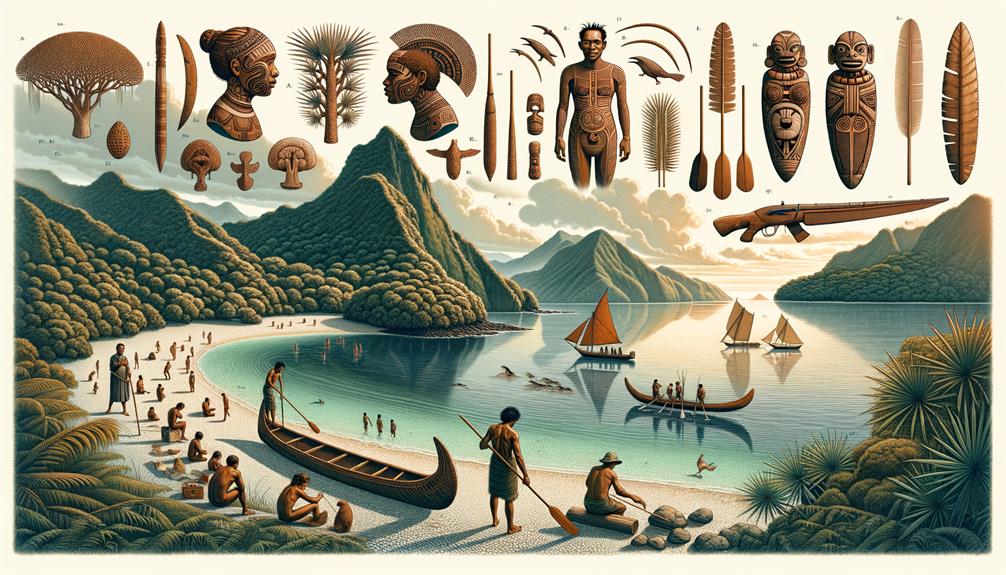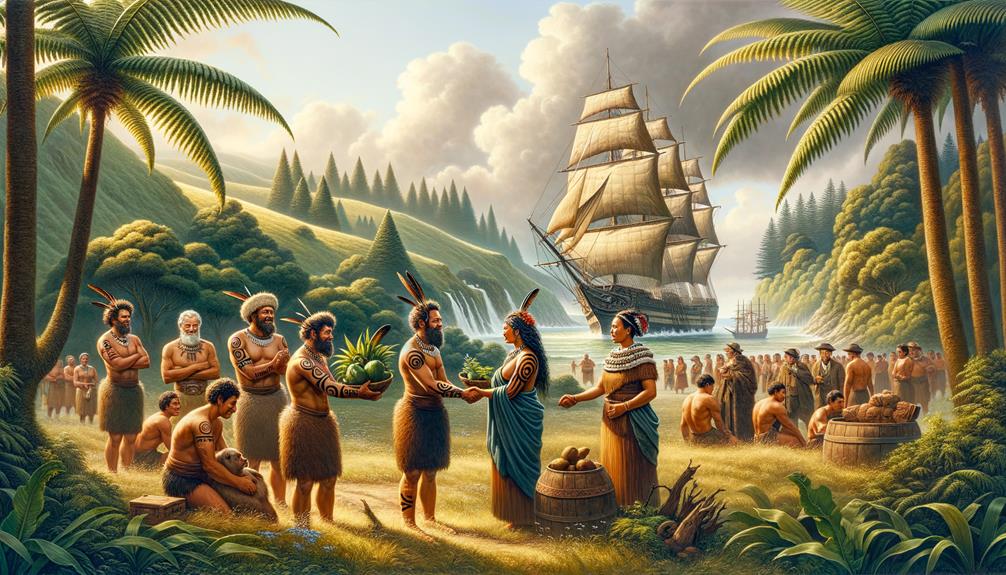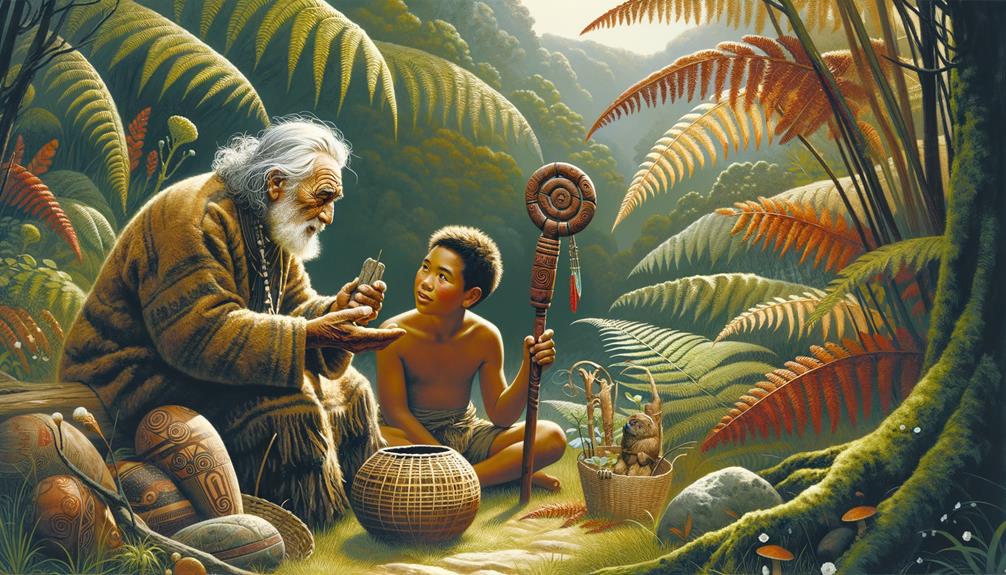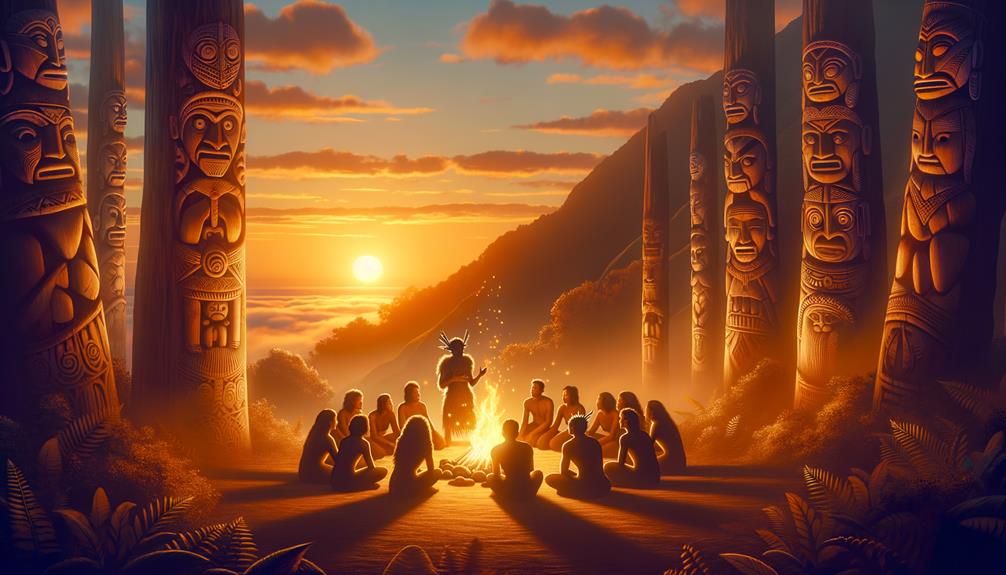The Chronicles of Moriori Genesis tell the captivating story of the Moriori people, who hailed from Eastern Polynesia. Around the year 1500, they decided to make the Chatham Islands their home. Here, they fashioned a unique society, one that was rooted in peace and led by Chief Nunuku-whenua.
Even in the face of challenging environmental conditions and the arrival of Europeans, the Moriori people showed their resourcefulness. They adjusted their lifestyle to survive and thrive, demonstrating an impressive adaptability. The Moriori people faced a tragic period of genocide at the hands of the Taranaki Maori tribes. But their story didn't end there. Their efforts to resuscitate their rich culture highlight their undeniable resilience.
Their history stands as a testament to the tenacity and endurance of the human spirit. The Chronicles of Moriori Genesis are filled with stories waiting to be told. So, for those with a spirit of inquiry, there's a rich tapestry of narratives waiting to be discovered.
Origin of the Moriori People
If we take a closer look at the Moriori people's roots, it's clear they hail from Eastern Polynesia. They set off on a journey to the Chatham Islands around 1500, possibly alongside the first Māori arrivals to New Zealand. As the first settlers of the Chatham Islands, their migration played a major role in shaping their unique cultural heritage.
By the time the 16th century rolled around, the Moriori population had grown to around 2,000. They were scattered across nine tribes, all living under the leadership of a respected chief, Nunuku-whenua. This chief was responsible for introducing Nunuku's Law, a revolutionary non-violence policy that would become a cornerstone of Moriori culture. This rule significantly influenced their society and interactions, distinguishing them from their Polynesian roots.
But, a significant event in Moriori history happened with the arrival of the British ship Chatham in 1791. This encounter led to a tragic misunderstanding, highlighting the stark contrast between the Moriori's peaceful beliefs and the foreign practices of the newcomers. This unfortunate incident illuminated the vulnerability of the Moriori people, their commitment to peace, and their isolation from the rest of the world. The Moriori people's history tells the story of a peaceful people, living in harmony with their beliefs, yet faced with challenges from outside forces, but remaining steadfast in their unique identity.
Morioris Unique Adaptations

The Moriori people are a shining example of resilience and creative thinking. Their survival in harsh conditions shows their knack for problem-solving and their rich cultural traditions. For instance, they had a shortage of timber. So what did they do? They brought in the kopi karaka tree for food and utilized seal skins for warmth. This shows their ability to come up with ingenious survival strategies despite environmental limitations.
Their resource scarcity didn't prevent them from developing a rich culture. They made waka, or canoes, that couldn't sink, using cow bladders, flax, and wooden framing. This is a testament to their adaptability. They lived in a society where decisions were made cooperatively. The Moriori turned difficulties into opportunities, carving ancestral and spiritual narratives on thousands of trees.
The arrival of Europeans in the 18th century posed new problems, like the extermination of seals, which affected their traditional lifestyle. But they took these changes in stride, showing their adaptability. The unique adaptations of the Moriori people show that they are defined not by their limitations, but by their resourcefulness and cultural strength. Their story is a testament to the power of resilience, inventiveness, and survival in the face of hardship.
Interaction With European Settlers

The Moriori people's first contact with Europeans in 1791 marked a notable shift in their society. The arrival of a British ship on Rēkohu set the stage for a series of encounters with settlers that would drastically alter the way of life for the Moriori.
By the 1830s, sealers started to frequent the Chatham Islands. This had a significant impact, not just on the immediate environment, but also on the lifestyle of the Moriori people. The seal colonies, which were wiped out due to these European activities, left enduring repercussions for the Moriori.
| Year | Event | Impact |
|---|---|---|
| 1791 | Europeans made initial contact | Brought about new challenges and transformations |
| 1830s | Arrival of sealers | Resulted in damage to the environment and cultural regression |
| Post 1830s | Seal colonies wiped out | Led to enforced cultural adaptation and regression |
| Ongoing | Impact from Europeans | Continued cultural regression |
Despite these extraordinary pressures, the Moriori people found a way to endure and adjust. However, these adaptations came with sizable shifts to their society and culture. The effects of their interactions with European settlers linger on as a significant part of Moriori history, marking a time of profound decline and change.
The Moriori Genocide
Back in 1835, a traumatic event took place in Moriori history. The Taranaki Māori tribes launched an attack on the Chatham Islands, an event that led to the horrific death of around 300 Moriori people. Many more were forced into slavery. Even though the Moriori outnumbered the attackers, they decided to stick to their sacred pacifist principle, known as Nunuku's Law. Unfortunately, this decision had tragic consequences.
This violent act of genocide hugely affected the Moriori population. The number of deaths climbed to over 1,500, which was almost 10% of their population. This number doesn't even include the many who suffered through years of slavery and the countless lives that were permanently scarred by this oppression. The Taranaki Māori imposed a harsh policy of language suppression, prohibiting the Moriori from speaking their language, marrying, or having children. The cultural and emotional impact of these restrictions was beyond measure.
This attack and the subsequent genocide are among the most horrific events in Moriori history. The effects of these events continued to be felt long after the last violent act, impacting generations of Moriori. By studying this grim period, we get a deeper sense of the resilience and cultural strength of the Moriori people.
The Moriori Cultural Revival

The Moriori people are making a strong comeback, and it's pretty incredible to see. Despite their past being marred by a devastating genocide, these folks are proving that resilience is in their DNA. By actively striving to bring back their history, language, and traditions, they're not just reviving their culture but also redefining it for the future generations.
This cultural resurgence is a lot more than just celebrating the past. It's about taking their rich history and using it to shape their future, giving it a sense of continuity. The re-emergence of their language – which was once dangerously close to being forgotten – serves as a testament to their tenacity.
The revival has also seen a rise in the display of traditional arts and the organization of cultural events. These provide an opportunity for the world to experience, appreciate, and understand the Moriori way of life. These efforts clearly show how committed the Moriori are to keeping their unique culture alive and kicking.
This revival serves as a shining example of hope, lighting the way towards a future where the Moriori heritage can flourish.
Frequently Asked Questions
What Led to the Moriori Genocide?
The horrific experience of the Moriori genocide took root in 1835 when they were invaded by two Māori tribes. Although the Moriori had greater numbers, they held strong to their core belief in pacifism. Sadly, this led to a brutal defeat and their eventual enslavement.
What Is the Sad Story of the Moriori?
The story of the Moriori people really tugs at the heartstrings. They suffered a severe blow in 1835 when Māori tribes invaded their land. The Moriori's commitment to peaceful living led to a catastrophic loss of life, their homeland, and their unique cultural identity. It's a distressing tale of genocide that leaves a profound impact.
What Is the Tragedy of the Moriori?
The Moriori people's tragedy is a gut-wrenching story of a peaceful group who were horrifically overpowered and enslaved by two Māori tribes in 1835, even though they were known for their peaceful ways. It's a devastating account of serenity being shattered by unexpected violence.
Who Are the Descendants of the Moriori?
You know, it's quite interesting how the descendants of the Moriori people have spread out, not just in the Chatham Islands or mainland Aotearoa, but all over the world. And what's even more impressive is how, even after mixing with other indigenous groups, they've been able to hold onto their cultural traditions and identity. They've really shown a remarkable resilience.


